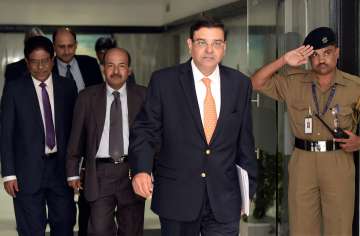It has been exactly one year since the Reserve Bank of India’s six-member Monetary Policy Committee (MPC) sat for its first-ever policy review under Governor Urjit Patel, and cheered markets with a 25 basis points rate cut.
While the RBI came under immediate flak for ‘bowing to government pressure’, it has since refrained from lowering key rates other than one occasion, when it lowered interest rates to 6 per cent in August this year.
Today, all eyes will be on the RBI again as it releases the fourth bi-monthly monetary policy statement later in the day. The situation though, is entirely different from a year ago when the MPC replaced the earlier system of monetary policy review.
Through the year, the RBI has resisted the temptation to lower rates even when inflation has been low and even sat through tough decisions like demonetization and GST implementation.
Ahead of the policy review, there are fervent calls for a rate cut from industry and other stakeholders to spur growth, with the CII calling for a 100 basis points cut in interest rates.
While uncertainty prevails over the possibility of a rate cut, here are some key factors to consider:
1. Consumer inflation touched a five-month high of 3.36 per cent in August from a year earlier. This raises doubts of a rate cut considering the central bank's target of maintaining consumer inflation at around 4 per cent - the midpoint of its mandated target of 2 to 6 per cent.
2. Global oil and commodity prices are on the rise and the RBI could exercise caution. Crude prices have soared to two-year highs, diminishing the benefit that lower crude oil prices have so far had on the government’s coffers. That India depends on oil imports to meet most of its fuel demands doesn’t help the cause either.
3. The government’s reported plans to provide a boost to the economy could also be on RBI’s mind while deciding rates. A boost in spending to spur growth could lead to the government loosening its fiscal deficit target which stands at 3.2 per cent of the GDP for the year ending March 31, 2018.
4. GDP growth has slowed down to 5.7 per cent for the July quarter, its lowest in three years and down from 7.3 per cent seen in the September quarter last year. Industrial output is low and so is bank lending. Banks have become increasingly cautious in lending given the RBI’s crackdown on NPAs. All this and more has the government and industry clamouring for a rate cut.
5. The Indian rupee had hit a low of 68.86 to the US dollar soon after the government’s demonetization decision in November 2016. It did bounce back to trade in the 64-66 range but slipped again this September. A weaker rupee could concern the RBI since a weak rupee will result in higher imported inflation and also puts a question mark on the stability of markets.
Latest Business News

